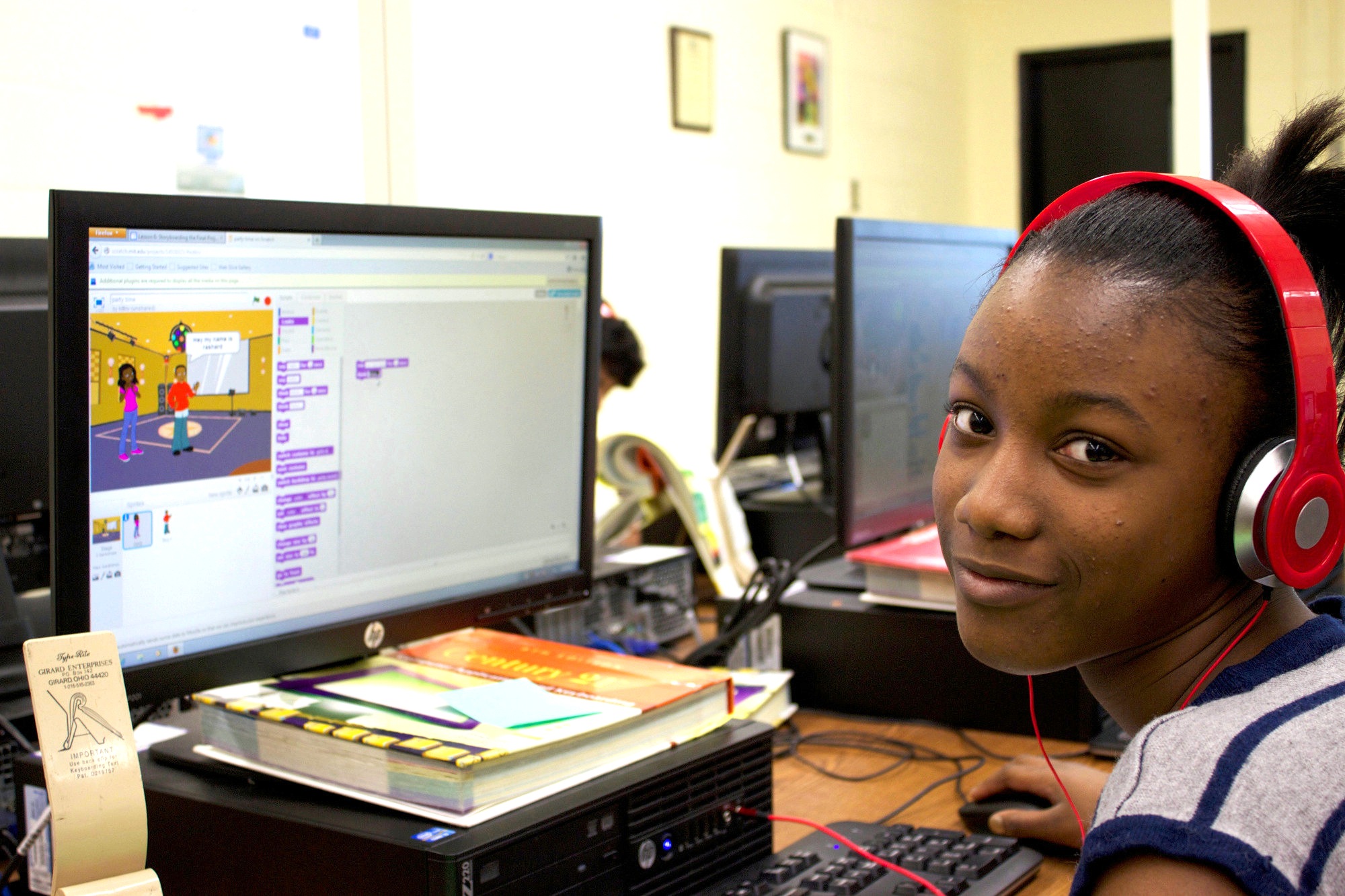10 Websites with resources to help teach your kids how to code
Coding for kids is the new literacy. It covers various aspects of a kid’s learning; logic building, systematic thinking, problem-solving, teamwork, and creativity. Teaching coding to kids has become an essential part of the curriculum, and through learning to code, kids can improve their problem-solving skills as well as developing computational thinking skills. Kids have probably been exposed to computers, video games, smartphones, tablets, and other electronics from a young age and some of them are savvy enough to have shown interest in developing their own games so kids as young as 7 years of age can start coding and learning the very basics of programming. Coding for kids has gained popularity in recent years as science, innovation and technology has gradually become an increasingly part of everyday life. Kids who learn to code when they’re young can set themselves up for a lifetime of opportunities for success.
Coding in its most basic term is computer programming or developing. Coding utilizes a creative process in which computers are instructed on how to execute different actions.
In this article, we will discuss, early education coding websites that teach the basic concepts of coding like commands that a computer can execute, functions, loops, conditional codes, bug fixing, and variables to kids and young programmers.
Codemonkey
Age: 4-11 years
Platform: Web
CodeMonkey is a fun and educational game-based environment where kids learn to code without any prior experience. The platform has 200+ free challenges where kids have to code a monkey to catch bananas. From games like CodeMonkey Jr. to Banana Tales, students not only learn coding basics but also how to code in real programming languages. In the paid version you can get access to all 400 challenges, and Game design courses—Platformer for learning the basics of game building, Frogger to code versions of the classic game, and Sprite Animation lessons. Codemonkey is equipped with student solutions, automatic grading, and curriculum management with access to challenges/game builder where you use CoffeeScript to make computer and mobile games.
Scratchjr
Age: 5-7 years
Platform: iPhone/iPad, Android, Kindle, and Chrome extension
ScratchJr is a free coding platform for kids. It was developed by MIT after they developed Scratch, to teach coding to younger learners. You can download the app on an Android or iOS device, on your Kindle or add the ScrathJr extension to your chrome browser. It’s one of the best coding apps for kids with easy-to-follow code blocks. You can drag and drop the code blocks to program games and interactive stories. On the website, you will find an interface guide, a paint editor guide to making graphics, and block descriptions.
It does not only have instructions on how to code for kids but also activities, curriculum, and assessments for teachers to use in the classroom. Using ScratchJr will help children learn to code, as well as teach them reason and logic, creative thinking, and collaboration.
Code.org
Age: 5+ (Grades K-12 and Higher Ed)
Platform: Web
Code.org is one of the most widely used coding websites. It has coding classes for kids of Grades K-5, 6-12, and Higher Ed. The platform has free coding courses on making websites and games. It teaches the basics of programming, lessons on coding real apps, websites, and games using HTML, CSS, JavaScript, and more, and other advanced programming languages. The website offers four courses, with the first course aimed at early readers, aged between 4 and 6. The four courses have games, videos, puzzles, and activities that are designed to get kids coding, teaching them the basic principles of computer science.
Lightbot.com
Age: 4-8 years and 9+ years
Platforms: iPhone/iPad, Android, Windows, Mac, Kindle, and Web
Lightbot is a simple, game-based platform with lessons on sequencing, overloading, procedures, recursive Loops, and conditionals. It is a puzzle game based on coding that secretly teaches you programming logic as you play. It has apps to teach coding on various types of devices. A demo version of the coding app for kids is available for Lightbot’s Hour of Code.
Code Combat
Age: 5+
Platform: iPad/iPhone
Code Combat is a role-playing game that will teach kids to use both Python and JavaScript programming languages by working through the levels. Kids learn by directing the main character through the ‘Dungeons of Kithgard’ by writing code. The games encourage a trial-and-error approach, and kids learn critical thinking and creativity. After completing each level, the coders move to the next level, where they will learn even more complex coding skills. The game is free to use - and there are additional levels available through a monthly subscription - and children can connect with other players through the Code Combat community.
Stencyl.com
Age: 6+
Platforms: iPad/iPhone, Android, Mac, Windows, and Linux
Stencyl has a drag-and-drop interface like Scratch. Students learn to code by making games. Teachers can use the curriculum that is available on the website to streamline lessons. It has lessons on computer coding for kids that teach the basics of computer science. The platform is a video game development tool that allows users to create 2D video games for computers, mobile devices, and the web.
Tynker.com
Age: 7+ years (Grades K-8)
Platforms: Web, Android, iPhone/iPad
Tynker provides everything needed to learn computer programing in a fun way from wonderful apps to teach coding, to teaching how to code robots, build apps, explore STEM, build games, code drones, and create MOD Minecraft challenges. The platform powers the creativity of over 60 million kids and serves thousands of schools and educators worldwide.
In the Play section, you can start coding for free with Tynker’s step-by-step instructions.
This platform provides a great resource for teaching lots of different computer skills which are skills that are likely to be useful later in life. The block & text-based courses, with over 3,700 learning modules, and access to popular coding languages, makes it an acceptable learning path for every kid no matter their age or level.
Scratch
Age: 8 to 16 years
Platform: Web
This free coding platform for kids is designed by MIT. It’s one of the first platforms that democratized computer science education.
It is like ScratchJr, but a little advanced. With Scratch, you can use blocks of codes to create animations, interactive stories, and games. You can even teach kids how to program drones and robots that are compatible with this open-source coding platform.
Students can share their creations with a growing Scratch community worldwide.
It encourages students to think creatively and systematically and collaborate.
The platform aims to teach the mathematical and computational ideas and concepts of coding, as well as developing design skills and becoming more fluent in the language of computer code - which are essential skills in the 21st century.
Educators can join the ScratchEd community to share and gain coding lessons, activities, and knowledge about using the platform.
Freecodecamp.org
Age: 12+
Platform: Web
Freecodecamp has free coding lessons on HTML5, CSS, Responsive design, Front-end development, JavaScripts, JQuery, JSON, React, Back-end developments, and automated testing. It gives you challenges with instructions that you can follow for hands-on learning on the platform. Their well-planned, free coding courses will provide you knowledge of the syntax of various coding languages. The platform provides the chance to test your ability by putting your coding lessons to practice by helping in building a website for an NGO. You will in turn gain certificates that will add value to your resume.
Coding Safari
Age: 2+
Platforms: iPad/iPhone, Android, Mac
Coding Safari is an educational app available on iOS that is suitable for kids aged 2 and up. Teaching pre-coding skills, like computational thinking and problem-solving, this app is a great introduction to the most simple coding ideas and concepts. Coding Safari is a good stepping stone, making it easy to move on to more complicated coding games and activities when the time is right.
So even though the game doesn’t teach any specific programming languages, it gives young children these foundations from which they will build on and learn to code. This game will engage young children in computational thinking - the fundamental techniques needed to understand coding - without them realizing they are learning. It will also ignite their passion for puzzles and problem-solving - all while playing a fun game with animals.


